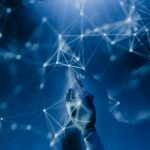Contents
- 1 Exploring Examples of Computer Vision in Artificial Intelligence
- 2 Intro
- 3 Enhancing Healthcare with AI-Powered Diagnostics
- 4 Revolutionizing Retail with Smart Checkout Systems
- 5 Improving Public Safety through Surveillance Systems
- 6 Advancing Autonomous Vehicles with Machine Vision
- 7 Elevating Sports Analytics and Performance
- 8 Facilitating Face Recognition for Security and Personalization
- 9 What is an example of computer vision in AI?
- 10 How is AI being used for computer vision?
- 11 Where is computer vision used in real life?
Exploring Examples of Computer Vision in Artificial Intelligence
Intro
Artificial intelligence (AI) has made remarkable progress in recent years, and one of the most fascinating aspects of this field is computer vision. Computer vision is the ability of machines to interpret and understand visual information, just like humans do. It allows computers to analyze, process, and extract meaningful data from images or videos, paving the way for a range of applications in various industries. From self-driving cars to facial recognition, there are numerous examples of computer vision in artificial intelligence that demonstrate the potential of this technology. In this blog post, we will explore some of these examples and dive into how computer vision is shaping the future of AI. So, let’s dive in and discover the exciting world of computer vision in artificial intelligence.
Enhancing Healthcare with AI-Powered Diagnostics
One of the most transformative examples of computer vision in artificial intelligence is its application in the healthcare industry, particularly in diagnostics. AI-powered diagnostics leverage computer vision to analyze medical images such as X-rays, MRIs, and CT scans with unparalleled precision and speed. This innovation enables early detection of diseases, such as cancer, by identifying minute anomalies that human eyes might miss. Computer vision algorithms are trained on vast datasets of medical images to recognize patterns and abnormalities, leading to more accurate diagnoses and personalized treatment plans. In dermatology, computer vision is used to analyze skin lesion images for signs of melanoma, significantly improving the accuracy of skin cancer screenings. Similarly, in ophthalmology, AI models analyze retinal images to detect diabetic retinopathy, a condition that can lead to blindness if untreated. These examples underscore the critical role of computer vision in enhancing healthcare outcomes, reducing diagnostic errors, and making healthcare more accessible and efficient. By augmenting the capabilities of medical professionals, computer vision in AI is setting new standards in patient care and treatment efficacy.
Revolutionizing Retail with Smart Checkout Systems
In the retail sector, one of the most innovative examples of computer vision in artificial intelligence is the development of smart checkout systems. These systems are transforming the shopping experience by eliminating the need for traditional cashier checkouts, thereby reducing wait times and enhancing customer satisfaction. Through the use of AI-powered cameras and image recognition technology, these smart checkout solutions can accurately identify products as shoppers add them to their carts or baskets. The items are automatically scanned and tallied, allowing customers to simply walk out with their purchases, which are then charged to their accounts without any physical checkout process. This seamless integration of computer vision not only streamlines operations but also provides valuable insights into consumer behavior and inventory management. Retailers can analyze purchase data to optimize store layouts, manage stock levels more efficiently, and tailor marketing strategies to consumer preferences. By harnessing the power of computer vision in artificial intelligence, smart checkout systems are setting a new standard in retail convenience and operational efficiency.
Improving Public Safety through Surveillance Systems
Improving public safety through surveillance systems is another compelling example of computer vision in artificial intelligence at work. By integrating AI into surveillance cameras, authorities can monitor public spaces more effectively, identifying potential security threats with greater accuracy and speed. These advanced systems can recognize suspicious activities, track the movements of persons of interest across different cameras, and even detect unattended objects, such as bags left in public places, which could pose a security risk. The incorporation of facial recognition technology further enhances the capability of these systems to quickly identify and alert authorities about individuals who are wanted or known to pose a threat. Additionally, computer vision algorithms can analyze crowd patterns to predict and prevent accidents or stampedes during large public gatherings. This proactive approach to public safety, powered by artificial intelligence and computer vision, not only helps in crime prevention but also aids in disaster response by providing real-time data to emergency services. The integration of these technologies into public surveillance systems showcases how computer vision is becoming an indispensable tool in enhancing public security and well-being.
Advancing Autonomous Vehicles with Machine Vision
The advent of autonomous vehicles is one of the most groundbreaking examples of computer vision in artificial intelligence, showcasing its pivotal role in advancing automotive technologies. Machine vision equips these vehicles with the ability to navigate and operate independently by interpreting visual data from their surroundings. This includes recognizing traffic signs, detecting obstacles, understanding lane markings, and even identifying pedestrian movements. By integrating high-resolution cameras and sensors, autonomous vehicles process and analyze real-time visual information, making split-second decisions that ensure safety and efficiency on the road. The algorithms driving these systems are continuously refined through extensive data collection and machine learning techniques, enhancing their capability to deal with complex driving scenarios. This application of computer vision not only paves the way for a future of self-driving cars but also contributes significantly to reducing traffic accidents and optimizing traffic flow, marking a transformative step in how we envision transportation and mobility.
Elevating Sports Analytics and Performance
Computer vision is dramatically transforming the sports industry by elevating analytics and enhancing athlete performance, showcasing another compelling example of computer vision in artificial intelligence. Through high-speed cameras and AI algorithms, coaches and trainers can analyze the biomechanics of athletes’ movements in real time. This technology captures intricate details of performance, from the angle of a soccer player’s kick to the form of a swimmer’s stroke, providing actionable insights that were previously unattainable. Beyond individual performance, computer vision enables the analysis of team formations and tactics, offering a strategic edge in competitive play. For broadcasters and sports analysts, this technology enriches fan experience by providing advanced statistics and visualizations during live events. Tracking technologies also play a crucial role in injury prevention, as they can identify when an athlete’s movements deviate from their norm, signaling potential fatigue or risk of injury. This integration of computer vision into sports not only optimizes athletic performance but also revolutionizes how games are played, analyzed, and enjoyed, marking a significant leap forward in sports science and entertainment.
Facilitating Face Recognition for Security and Personalization
Facilitating face recognition for security and personalization stands out as a prominent example of computer vision in artificial intelligence, illustrating the technology’s versatility and impact. Utilizing complex algorithms, computer vision systems can accurately identify individual faces from live video feeds or static images. This capability underpins advanced security systems, enabling secure access to devices, buildings, and sensitive information based on biometric verification. Beyond security, face recognition fosters a new level of personalization in services and marketing. Retailers leverage this technology to offer tailored shopping experiences, while smart home systems use face recognition to customize environment settings according to the preferences of each household member. These applications demonstrate the profound ways in which computer vision is interwoven into the fabric of our daily lives, enhancing security measures and personalizing our interactions with technology. By embedding intelligence into machines to recognize and interpret human faces, computer vision is reshaping the landscape of privacy, security, and user experience.
What is an example of computer vision in AI?
In the realm of retail, examples of computer vision in artificial intelligence are transforming how consumers interact with products and brands, significantly enhancing customer experiences. One of the most notable applications is in virtual try-on technology, which enables customers to see how clothes, glasses, or makeup products would look on them without the need for physical trials. This is achieved through AI algorithms that analyze the user’s image or video feed in real time, overlaying the selected products onto their digital avatars. Another example is smart shelves equipped with computer vision technology that can monitor inventory levels, detect misplaced items, and even analyze consumer behavior by tracking which products attract more attention. These innovations not only streamline the shopping experience but also offer valuable insights to retailers for optimizing their product placements and inventory management. Through these applications, computer vision in artificial intelligence is not just reshaping the retail landscape but also setting new standards for personalized and efficient shopping experiences.
How is AI being used for computer vision?
As AI technology, particularly in how it’s used for computer vision, continues to evolve and integrate into more aspects of our daily lives, it brings with it a host of ethical considerations and future challenges that need to be addressed. One of the primary concerns is privacy. As computer vision systems become more sophisticated, they are increasingly capable of recognizing individual faces and actions in public and private spaces, raising questions about surveillance and the consent of those being observed. Another significant issue is bias in AI systems. Since these systems learn from vast datasets, if the data contains biases, the AI’s decision-making will too. This can lead to unfair or prejudiced outcomes, especially in sensitive areas such as law enforcement, hiring practices, and loan approvals, where computer vision is being applied to assess individuals. The future challenge lies in ensuring that as AI becomes more embedded in computer vision applications, it is developed and used in a manner that respects individual rights, promotes fairness, and is transparent in its operation. Developers and regulators alike must work together to establish guidelines and standards that prevent misuse and protect against invasive surveillance, ensuring that the transformative potential of AI in computer vision is realized in an ethical and responsible way.
Where is computer vision used in real life?
In the realm of agriculture, the question of where computer vision is used in real life finds a compelling answer. Computer vision technology is revolutionizing the way we approach farming and food production, leading to groundbreaking innovations and enhanced sustainability. Through the analysis of drone and satellite images, computer vision systems can monitor crop health, predict yields, and detect pest invasions or diseases early on. This allows for precise intervention, reducing the need for chemical treatments and supporting eco-friendly practices. Furthermore, computer vision-equipped robots are being deployed to perform tasks such as weeding, harvesting, and planting with unprecedented accuracy and efficiency. By automating these labor-intensive processes, farmers can achieve higher productivity while minimizing their environmental footprint. The integration of computer vision in agriculture is not just transforming the sector; it’s paving the way for a future where farming is more sustainable, resilient, and aligned with the needs of a growing global population.


